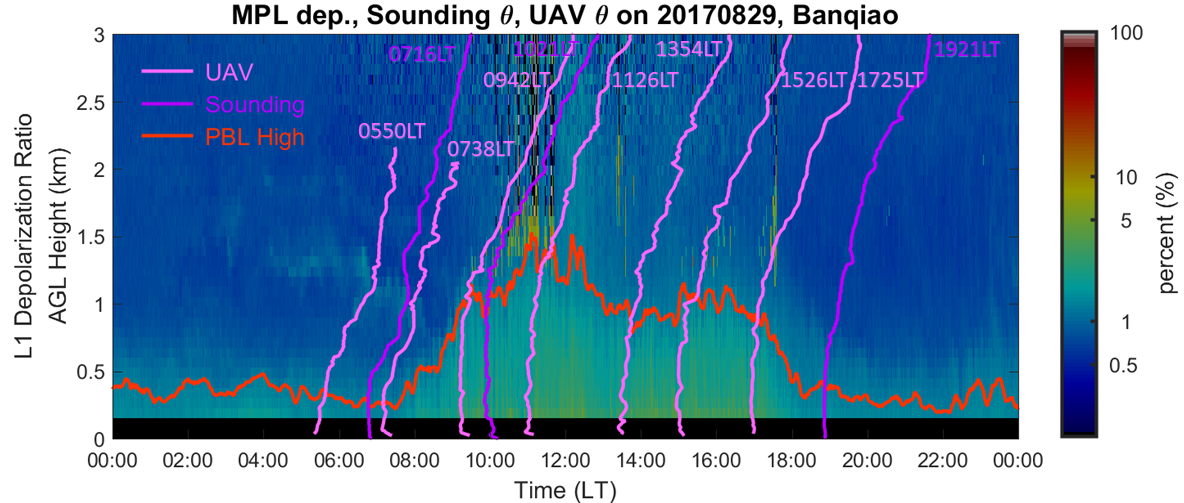Our first paper is published on line.



Abstract Planetary boundary layer (PBL), the skin layer of atmosphere, has strong interactions with earth surface, human activities, and vegetation. The PBL structure and development has effects on many weather phenomena as well as air quality. In this study, we aim to observe the PBL structure and the evolution of air pollution vertically using an unmanned aerial system (UAS). The experiment was carried out in the New Taipei city nearby the Taipei sounding station in August of 2017. We had conducted 16 flights in total and 7 of them on 29th August. In addition, data from three sounding balloons and lidar observations enhance the data set for studying the PBL development for a typical summertime day on 29th. Our results show that the UAS provides the low-level (0-3 km) atmospheric profile with parameters (temperature, RH, and Pressure) in good agreement with the data observed by meteorological soundings, especially for the PBL height detection. Ke L.-J., S.-H. Wang*, H.-Y. Huang, Y.-C. Wang, H.-F. Chuang, R.-Y. Hung, Z.-C. You, S.-C. Chang (2018), Observations on atmospheric boundary layer structure using an unmanned aerial system, Journal of Photogrammetry and Remote Sensing, 23, 103-113. (航測及遙測學刊 in Chinese)
